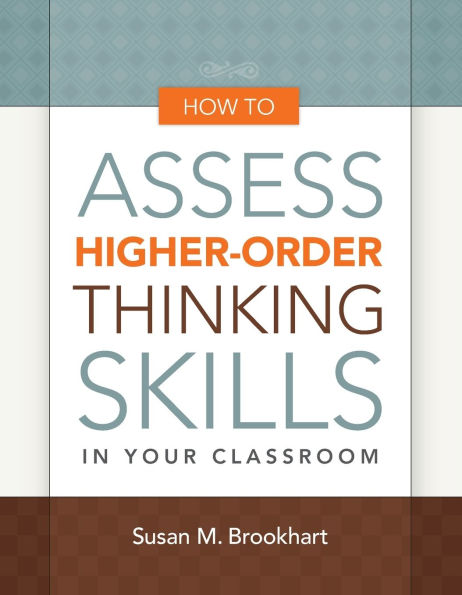Brookhart begins by laying out principles for assessment in general and for assessment of higher-order thinking in particular. She then defines and describes aspects of higher-order thinking according to the categories established in leading taxonomies, giving specific guidance on how to assess students in the following areas:
* Analysis, evaluation, and creation
* Logic and reasoning
* Judgment
* Problem solving
* Creativity and creative thinking
Examples drawn from the National Assessment of Educational Progress and from actual classroom teachers include multiple-choice items, constructed-response (essay) items, and performance assessment tasks. Readers will learn how to use formative assessment to improve student work and then use summative assessment for grading or scoring.
Aimed at elementary, middle, and high school teachers in all subject areas, How to Assess Higher-Order Thinking Skills in Your Classroom provides essential background, sound advice, and thoughtful insight into an area of increasing importance for the success of students in the classroom—and in life.
Brookhart begins by laying out principles for assessment in general and for assessment of higher-order thinking in particular. She then defines and describes aspects of higher-order thinking according to the categories established in leading taxonomies, giving specific guidance on how to assess students in the following areas:
* Analysis, evaluation, and creation
* Logic and reasoning
* Judgment
* Problem solving
* Creativity and creative thinking
Examples drawn from the National Assessment of Educational Progress and from actual classroom teachers include multiple-choice items, constructed-response (essay) items, and performance assessment tasks. Readers will learn how to use formative assessment to improve student work and then use summative assessment for grading or scoring.
Aimed at elementary, middle, and high school teachers in all subject areas, How to Assess Higher-Order Thinking Skills in Your Classroom provides essential background, sound advice, and thoughtful insight into an area of increasing importance for the success of students in the classroom—and in life.

How to Assess Higher-Order Thinking Skills in Your Classroom
159
How to Assess Higher-Order Thinking Skills in Your Classroom
159
Product Details
| ISBN-13: | 9781416610489 |
|---|---|
| Publisher: | ASCD |
| Publication date: | 09/16/2010 |
| Pages: | 159 |
| Product dimensions: | 6.90(w) x 8.90(h) x 0.50(d) |
